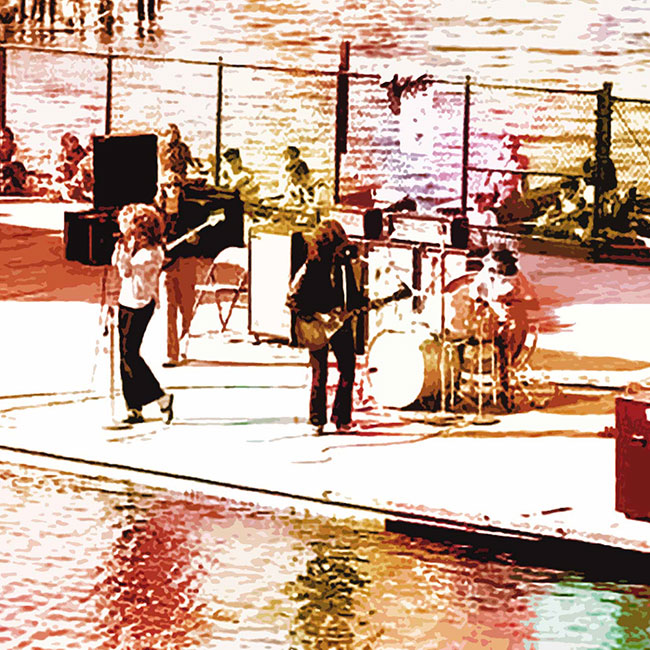FESTIVALS AND PROMOTION OF TOURISM IN THE 1950s

Sanremo and Naples, having realized the kind of popularity they were able to garner, immediately produced clones. From the mid-1950s, festival fever literally exploded. The festivals multiplied, on the initiative of entrepreneurs and local administrations seeking opportunities for visibility and promotion, not only in tourism, or enterprising entrepreneurs, specialized in organizing competitions and events: in addition to Sanremo and Naples, striving early on to achieve the same results, were Ancona, Velletri, Viareggio, Venice, Como, Messina, Montecatini, Livorno, Sandrigo, Grado, Pesaro, Palermo, Lucca and many others. Most simply followed the Sanremo formula; others were a variant of it; some were dedicated to songs in dialect and others to foreign songs. Others again were hybrids like the Festival of Grado, where Italian, German and songs in Grado’s dialect were competing; most were national, but there was no shortage of international festivals, such as Venice. The Festival of Ancona came only one year after Sanremo. Established in 1952, traditionally held in the month of July, its distinctive feature was that of combining the singing competition with a show, performances of the best of the repertoire of the participating singers, generally four, and entrusting the medley of tunes in the competition to Mario Barigazzi. Along with Gorni Kramer and Wolmer Beltrami, he was one of the greatest Italian accordionists: moreover, the greater part of the national production of accordions is in the Marche. The most sensational edition was that of 1958, in which Domenico Modugno and Antonio De Marco took part. The latter was suing Modugno for plagiarism of Nel blu dipinto di blu (…)
Since its first edition, at the end of February 1953, the Velletri festival was created to single out “the best Carnival song”; therefore with a local connotation and decidedly rural character, it made headlines more for its own qualities than by virtue of the fame of Sanremo: in fact it was called the “counter festival”, because those songs discarded by Sanremo had a chance to vindicate themselves there (…) The pieces are performed by two orchestras, Nello Segurini’s for the melodic genre, and Carlo Savina’s for the rhythmic genre (…)
The “Burlamacco d’oro” Festival was launched in Viareggio in 1958 on the initiative of journalist and musician Aldo Valleroni, already in 1947 with the Roman music publisher Silvio Da Rovere, the impresario Sergio Bernardini and the director of Radio Firenze Aldo Angelini, the promoter of a rather unsuccessful Italian song festival abandoned after two editions, shortly before the Sanremo exploit, due to the indifference of local authorities. Only in the context of the Viareggio carnival could Valleroni propose this new event, which continued for seven editions until 1964, but was however destined to die out – although Versilia in those years became a focal point for so many clubs that it was worth contemplating a summer singing event – perhaps because it was too close in the year to Sanremo and many of the songs were those rejected in Sanremo (…). The purpose of the event was above all to discover and support budding singers and young songwriters, as actually happened for Nicola Arigliano, Jimmy Fontana, Edoardo Vianello, and Enrico Polito (…)
A distinctive festival is the one that was held for the first time in Grado in June 195. The competition presented songs in Italian, German and Grado’s dialect, performed by William Galassini’s orchestra (…). Performing in Grado were Achille Togliani, Marisa Del Frate, and Fiorella Bini (…). The festival included songs from Italy, Germany, Austria and Switzerland, but most of the interest was focused on the Italian pieces. As regards the festivals dedicated exclusively to songs in dialect, in 1957 there were the festivals in Genoa, Vasto, Taranto, Catania, Turin, Florence, Molfetta, Trieste and Milan. In 1959 came the Sandrigo Festival for Venetian song and in 1961, the Pradamano Festival dedicated to traditional Friulian folk songs. The Milanese Song Festival was conceived in 1956 by the Meneghina family: 190 compositions competed, selected by a jury chaired by Giulio Confalonieri and “made up of many fine names from literature, journalism, song, industry and … Milanese tradition”; the final at the Piccolo Teatro on June 25 crowned Mia Milan; the second edition. held in 1958, was produced by the impresario of the Teatro Nuovo Remigio Paone with the artistic consultation of Giovanni D’Anzi.
The Festival of Vasto, organized for the first time in 1955 by the local tourist board, was instead dedicated to the songs of Abruzzo, Catania and Sicily, while the Genoa Festival was created specifically to re-evaluate a singing tradition that is now almost extinct.
Excerpt from: Irene Piazzoni, La musica leggera in Italia, L’Ornitorinco, Mi, 2011, pp. 191-198
